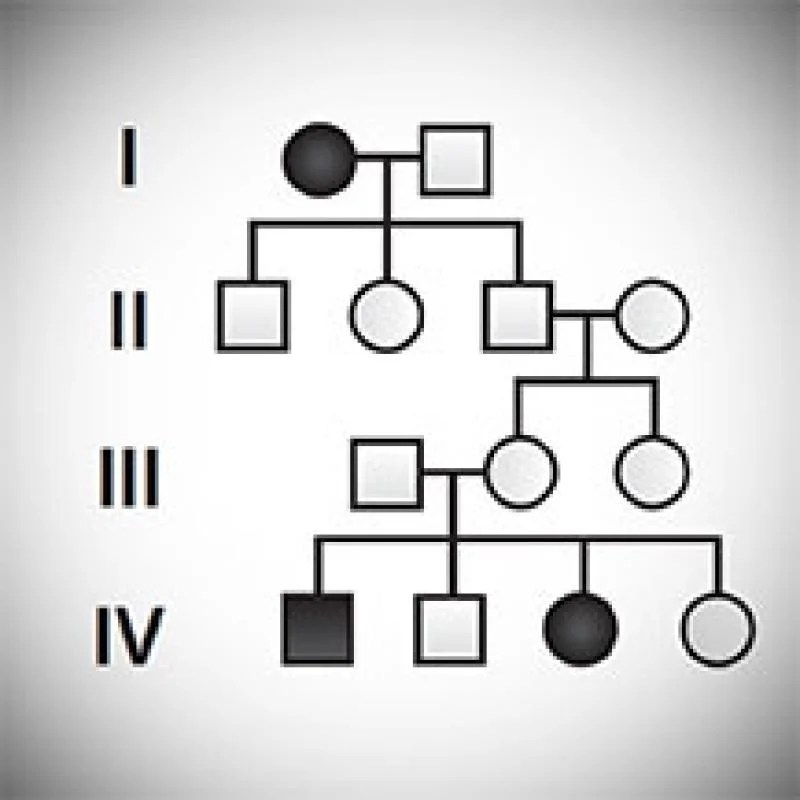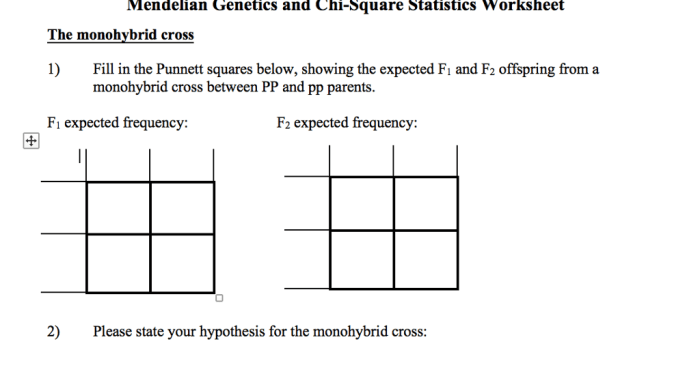Mendelian genetics probability pedigrees and chi-square statistics – Delving into the realm of Mendelian genetics, probability pedigrees, and chi-square statistics, we embark on a scientific expedition that unveils the intricacies of genetic inheritance. This discourse delves into the fundamental principles of Mendelian genetics, exploring the patterns of inheritance and the interplay between dominant and recessive alleles.
Through engaging examples, we elucidate the significance of Mendelian genetics in comprehending the complexities of genetic disorders.
Venturing further, we unravel the role of probability in Mendelian genetics, demonstrating how mathematical principles guide the prediction of genetic outcomes. Punnett squares and probability trees emerge as invaluable tools in this endeavor, empowering us to calculate probabilities in diverse Mendelian inheritance scenarios.
1. Mendelian Genetics
Mendelian genetics, named after Gregor Mendel, forms the foundation of our understanding of inheritance patterns. It elucidates the principles governing the transmission of traits from parents to offspring, laying the groundwork for modern genetics.
Fundamental Principles:
- Inheritance Patterns:Traits are inherited in discrete units called genes, which exist in different forms known as alleles. Each individual inherits two alleles for each gene, one from each parent.
- Dominant and Recessive Alleles:When an individual inherits two different alleles for a gene, one allele may be dominant, masking the expression of the other recessive allele.
- Law of Segregation:During gamete formation (sperm or eggs), the two alleles for each gene separate, ensuring that each gamete carries only one allele for each gene.
- Law of Independent Assortment:Alleles of different genes assort independently of each other during gamete formation, resulting in random combinations of alleles in offspring.
Examples:
- Pea Plants:Mendel’s classic experiments with pea plants demonstrated the principles of inheritance, such as dominant green seed color over recessive yellow seed color.
- Human Traits:Mendelian inheritance governs the inheritance of various human traits, including eye color, hair texture, and certain genetic disorders.
Significance:
- Understanding Genetic Disorders:Mendelian genetics helps identify the inheritance patterns of genetic disorders, such as cystic fibrosis and sickle cell anemia, enabling genetic counseling and prenatal testing.
- Plant and Animal Breeding:Breeders use Mendelian principles to selectively breed plants and animals with desired traits, improving crop yields and livestock quality.
2. Probability in Mendelian Genetics

Probability plays a crucial role in Mendelian genetics, allowing us to predict the likelihood of inheriting specific traits. Probability calculations help determine the proportions of different genotypes and phenotypes in offspring.
Punnett Squares:
Punnett squares are visual representations that illustrate the possible combinations of alleles in offspring. They help calculate the probability of each genotype and phenotype.
Probability Trees:
Probability trees are branching diagrams that depict the sequence of events in a genetic cross. They provide a systematic way to calculate the probability of different outcomes.
Examples:
- Monohybrid Cross:A monohybrid cross involves parents that differ in only one gene. Punnett squares can be used to calculate the probability of homozygous and heterozygous offspring.
- Dihybrid Cross:A dihybrid cross involves parents that differ in two genes. Probability trees can be used to calculate the probability of specific genotypes and phenotypes in offspring.
3. Pedigrees in Mendelian Genetics

Pedigrees are family trees that depict the inheritance patterns of specific traits within a family. They are valuable tools for tracking the transmission of genetic disorders and identifying patterns of inheritance.
Creating and Interpreting Pedigrees:
- Symbols:Pedigrees use standard symbols to represent individuals and their relationships, including squares for males, circles for females, and different shading for affected and unaffected individuals.
- Inheritance Patterns:Pedigrees can reveal dominant or recessive inheritance patterns, as well as X-linked or autosomal inheritance.
Role in Genetic Counseling and Disease Diagnosis:
- Genetic Counseling:Pedigrees help genetic counselors assess the risk of inheriting genetic disorders and provide guidance to families.
- Disease Diagnosis:Pedigrees can aid in diagnosing genetic disorders by identifying patterns of inheritance and narrowing down the potential genetic cause.
4. Chi-Square Statistics in Mendelian Genetics

Chi-square statistics is a statistical test used to determine whether observed genotype frequencies in a population deviate significantly from expected Mendelian ratios.
Concept:
The chi-square statistic measures the discrepancy between observed and expected frequencies. A high chi-square value indicates a significant deviation from expected ratios.
Designing a Chi-Square Test:
- Null Hypothesis:The null hypothesis states that there is no significant deviation from expected Mendelian ratios.
- Expected Frequencies:Expected frequencies are calculated based on Mendelian principles and the observed sample size.
Interpreting Results:
- P-value:The p-value is the probability of obtaining the observed chi-square value if the null hypothesis is true.
- Significance Level:A pre-determined significance level (usually 0.05) is used to determine if the deviation from expected ratios is statistically significant.
FAQ Section: Mendelian Genetics Probability Pedigrees And Chi-square Statistics
What is the fundamental principle of Mendelian genetics?
The fundamental principle of Mendelian genetics states that inherited traits are determined by the interaction of alleles, which are alternative forms of genes. Each parent contributes one allele for each gene, and the combination of these alleles determines the phenotype (observable characteristics) of the offspring.
How is probability used in Mendelian genetics?
Probability is used in Mendelian genetics to predict the likelihood of inheriting specific traits. By considering the probability of each possible genotype and phenotype, geneticists can estimate the chances of an individual expressing a particular trait.
What is the purpose of a pedigree in Mendelian genetics?
A pedigree is a diagram that represents the inheritance of traits within a family. Pedigrees are used to trace the transmission of genetic disorders and to identify patterns of inheritance. They can also be used to predict the likelihood of an individual inheriting a specific trait.
What is chi-square statistics and how is it used in Mendelian genetics?
Chi-square statistics is a statistical test used to compare observed data with expected data. In Mendelian genetics, chi-square statistics is used to test whether the observed genotype frequencies in a population deviate significantly from the expected Mendelian ratios.